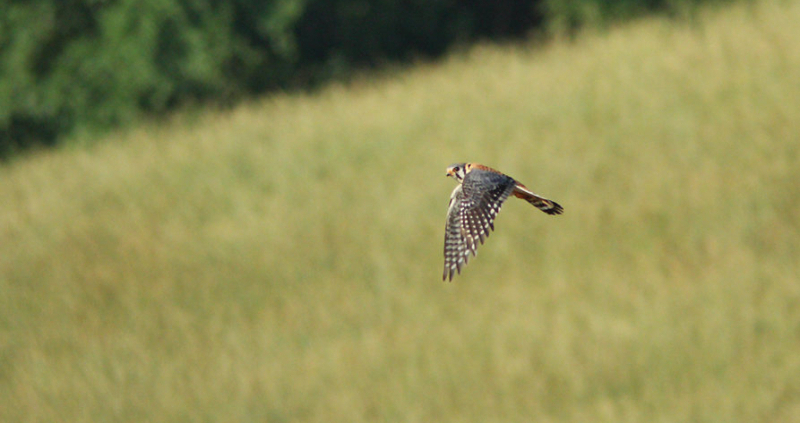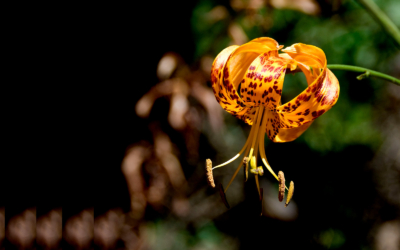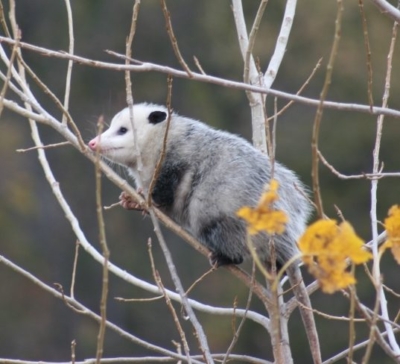The Kestrel and the Steel Mill – How the Urban Industrial Landscape Can Support Climate, Community and Habitats
Last summer, while walking along the shores of Lake Michigan with WHC board members, we witnessed an American kestrel, disturbed from hunting, rise silently, up and over the lake. The board members, on a tour of a restored habitat, stopped and watched as the small raptor flew in high circles above them. That this habitat restoration project was on the grounds of an operating steel mill made the sighting all the more special. That day, the kestrel became a symbol of the potential of urban industrial landscapes to contribute to the natural world.
Urban industrial communities face many challenges – including an economic dependency on ecological resilience in the face of a changing climate – that suburban, rural or urban residential neighborhoods do not. It is in urban industrial neighborhoods that materials are manufactured, that services like trash and recycling are aggregated, and that goods are moved between terminals, rails and roads. While these neighborhoods are critical to a functioning economy, they are also at higher risk from climate change due to aging infrastructure, higher percentages of surface impermeability, little natural habitat beyond fragments, hardened shorelines, dependence on compromised water flows and urban heat island effects that results in higher-than-average ambient temperatures.
These neighborhoods, whether in small industrial towns or larger cities, are easily overlooked and are usually absent from stakeholder discussions when resiliency is being discussed and climate adaptation efforts implemented. In addition, these communities are usually underserved by private resiliency and green infrastructure efforts; philanthropic investments are directed to more pristine places that can deliver the improvement metrics required by the funders. Because the role of industry in climate change adaptation tends to be internally focused on regulations, technological improvements and environmental controls, implementation of adaptation across a fence-line and into the urban industrial landscape is rarely a priority.
But companies with businesses in these landscapes have a great opportunity to address this inequity and adapt to a changing climate. The lands and economic risk are theirs, and the ecological solution can be theirs too. With incremental, cooperative efforts, the urban industrial landscape can be transformed to create better relationships to climate and the community and support healthy habitats that buoy the return of kestrels and other species.
Ecological restoration on unused corners of industrial sites and vacant lots can, if designed with the larger conservation context in mind, provide spaces for habitats to grow and biodiversity to thrive. In a recent article published in Urban Forestry and Urban Greening, authors Elsa Anderson and Emily Minor show that vacant lots can be inexpensively restored for both ecological and sociological benefit in low-income communities.[1] Within the fence-line of an industrial facility, land originally set aside for expansion or operations can be reclaimed and restored to connect to managed landscapes nearby and provide a haven for both wildlife and workers. ArcelorMittal’s Burns Harbor steelmaking operations, where the kestrel was sighted, has set aside 120 acres for restoration, including remnants of vital Indiana Dunes habitats.
In addition to vacant lots or underused lands, another characteristic of urban industrial land use is the linear features that crisscross the landscape, connecting industrial facilities to power and transportation. These linear features, which include utility rights-of-way, railroad tracks, roads and pipelines, are all possible conservation corridors for biodiversity. These corridors provide routes for animals to move with ease through fragmented landscapes and create stepping stone habitats between the vestiges of natural areas.
A growing trend of defragmentation using linear features is in the proliferation of bee boulevards and highways increasingly being planned and planted in cities around the world. Some of these efforts, like the Pollinator Pathway program started in Seattle, takes a linear feature, like a roadway with a median green strip, and plants it with drought-tolerant native plants. Other initiatives create virtual highways, like in Oslo, Norway where bee havens on rooftops and balconies “direct” pollinator traffic across a city. Many of these efforts are in visible, affluent residential areas, but the extent of linear features in industrial zones suggests potential habitat that has not yet been realized. Such projects can also serve to connect and engage communities like Waste Management’s Bucks County Landfills in Pennsylvania (as detailed in the white paper Prioritizing Pollinators in Corporate America). This WHC-certified program partners with the local school district and the Falls Township Senior Center to design and install pollinator gardens throughout the community.
Other considerations in urban industrial landscapes include connecting conservation efforts to nearby protected areas, considering green infrastructure to better manage water flows and other environmental challenges, and using industrial lands to provide STEM education and other opportunities for conservation-related activities with the community.
In these forgotten corners of towns and cities, where economic cycles can determine an entire community’s future, opportunities exist to consider the lands through a green lens and see a place where a kestrel can soar again.
[1] Anderson, Elsa C., and Emily S. Minor. 2017. Vacant lots: An underexplored resource for ecological and social benefits in cities. Urban Forestry & Urban Greening 21: 146-152.



